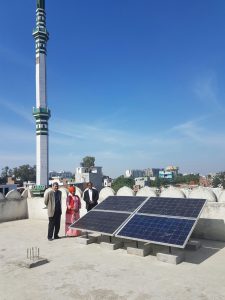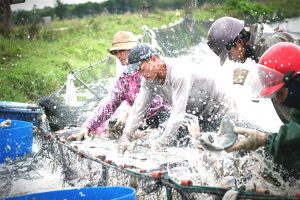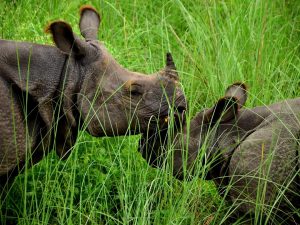Year after year, Brazilians are suffering from outbreaks of tropical diseases that the vast majority of its 207 million inhabitants have never even heard of. First, it was dengue fever, then the Zika virus struck, last year it was Chikungunya, and now yellow fever.
These diseases have affected almost 2 million people in rural and urban areas in Brazil, in both hot and cold regions, and in coastal and interior areas of this vast country that spans 8.5 million square kilometres. All these diseases were eradicated at the beginning of the last century. So why have they returned?
Experts say that there is no single reason, but they’re all transmitted by the same species of mosquito: Aedes aegypti. For now, the strain of yellow fever that is spreading across Brazil is transmitted only by the Haemagogus mosquito, which inhabits the forests. First the mosquitoes bite the natural hosts of the disease, monkeys. Then they bite humans, passing on the virus. When the trees are cut down, the mosquitoes increasingly infect whoever is at ground level.
“Deforestation has always been one of the major causes of tropical diseases in Brazil”, said Ulysses Confalonieri, a researcher at the Oswaldo Cruz Foundation and a joint winner of the 2007 Nobel PeacePrize awarded to the Intergovernmental Panel on Climate Change (IPCC). Confalonieri spent two years in the forests of northern Brazil specifically studying the yellow fever mosquito and thinks this latest cycle of yellow fever is attributable to forest loss.
Deforestation and tropical diseases
Last year, Brazil lost almost 8000 square kilometres of forest. According to the NGO Observatório do Clima, this is an increase of 29% over the previous year.
“It’s the largest increase in the rate of deforestation since 2008. Altogether, in this decade alone the Amazon has lost the equivalent of half of Panama,” stated Observatorio do Clima’s Claudio Angelo. Between 2000 and 2014, Brazil lost an average of 2.7 million hectares of forest per year, this despite the fact the rate of deforestation has been falling since 2004, according to recent study by the World Resource Institute (WRI).
The same report, however, shows an increase in destruction in the state of Minas Gerais, precisely where the wild strain of yellow fever is now appearing. This is the same place where a dam belonging to mining company Samarco burst in November 2015. The Mariana disaster, as Brazil’s greatest environmental tragedy has come to be known, killed 19 people, destroyed five villages, and contaminated 2,220 hectares as well as a 663-kilometre stretch of the Doce River, the mouth of which flows into the Atlantic Ocean. The 32 million cubic metres of iron ore tailings swept away everything in its path, including mosquitoes predators such as frogs.
“This is a possibility that we will never be able to prove because there is no data on local fauna monitoring prior to the accident in Mariana,” says Confalonieri.
The World Health Organisation (WHO) warned of the possibility that the disease might spread to neighbouring countries with similar ecosystems to Brazil, such as Argentina, Venezuela, and Paraguay. According to the WHO, as of February 2, Brazil was the only country in the region to have confirmed cases of yellow fever in humans. In Colombia and Peru, possible cases have been recorded. According to the Brazilian Ministry of Health, between December 1 2016 and February 6 2017 1,006 suspected cases of the disease were reported. 180 of these were confirmed to be yellow fever. Of the 157 deaths reported, 65 were confirmed, 89 are still being investigated. Three were ruled out. Of the 1,202 dead primates, 259 were confirmed to have had yellow fever.
Vaccines
Unlike the other three tropical diseases, there is a vaccine against yellow fever. Within 10 days of a single shot, recipients have near life-long immunity. The Oswaldo Cruz Foundation produces 9 million doses of vaccine per month and exports the vaccine to Africa and other Latin American countries.
The outbreak of wild yellow fever was slow to be detected despite new patients arriving from the countryside into large urban centres complaining of severe abdominal pain, headache, high fever and vomiting. Some were only correctly diagnosed when their eyes turned yellow and their livers ceased to function properly.
The first warning appeared only at the beginning of this year, when new mayors took office and learned what was happening through local public health clinics –the first place the rural populations turns to for help. The federal government fears wild yellow fever could turn into urban yellow fever. This would mean the disease becoming transmittable by the Aedes aegypti mosquito, which infests Brazil’s most populous cities like Sao Paulo and Rio de Janeiro.
Urban yellow fever was eradicated in 1942 but its return is unlikely to lead to tragedy according to Confalonieri who says its impacts will be limited because Brazil produces the vaccine. “The Ministry of Health says that national vaccine coverage is 63%. That’s not bad, it’s good, but by the time the virus returns to the city we need to reach over 90% to avoid a large-scale epidemic,” he says.





